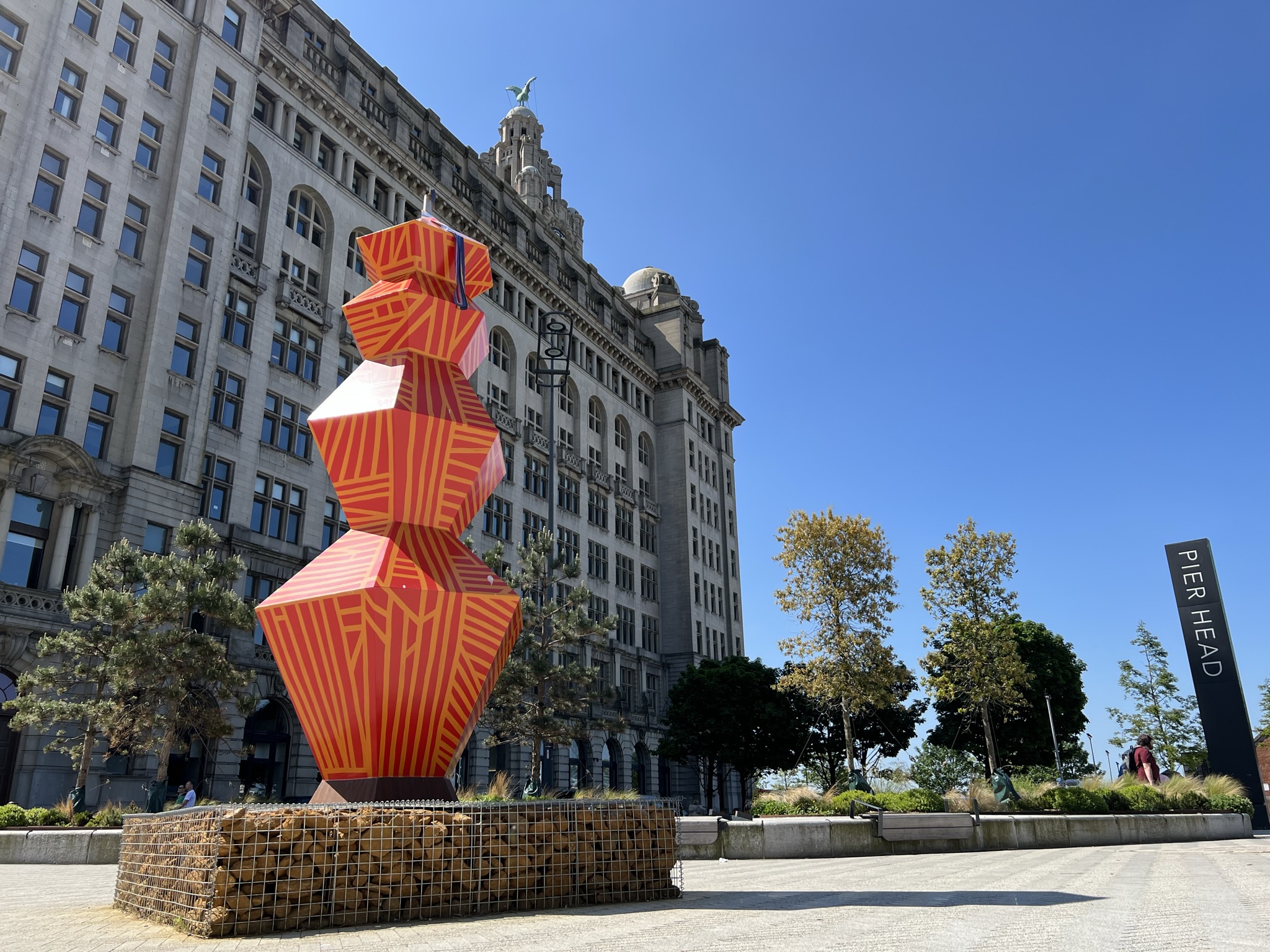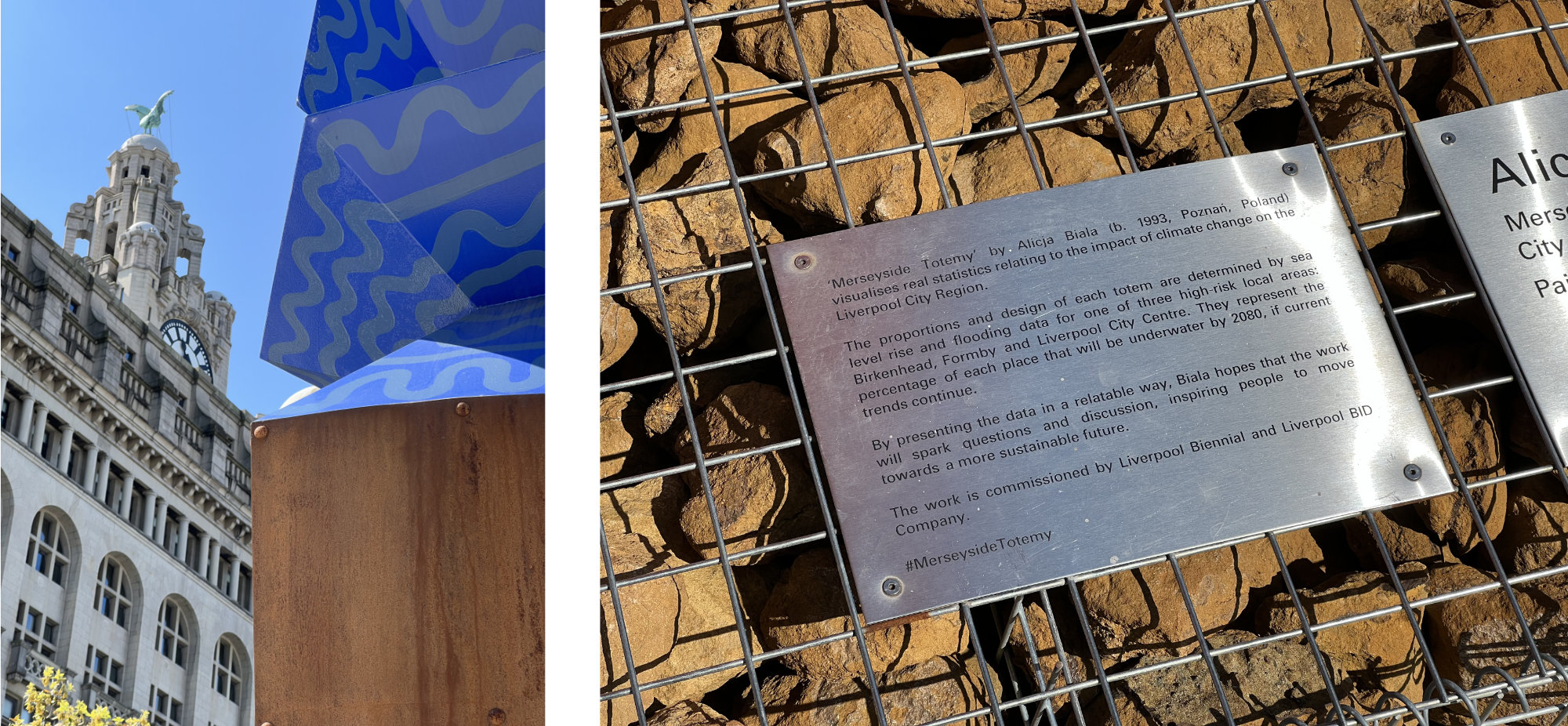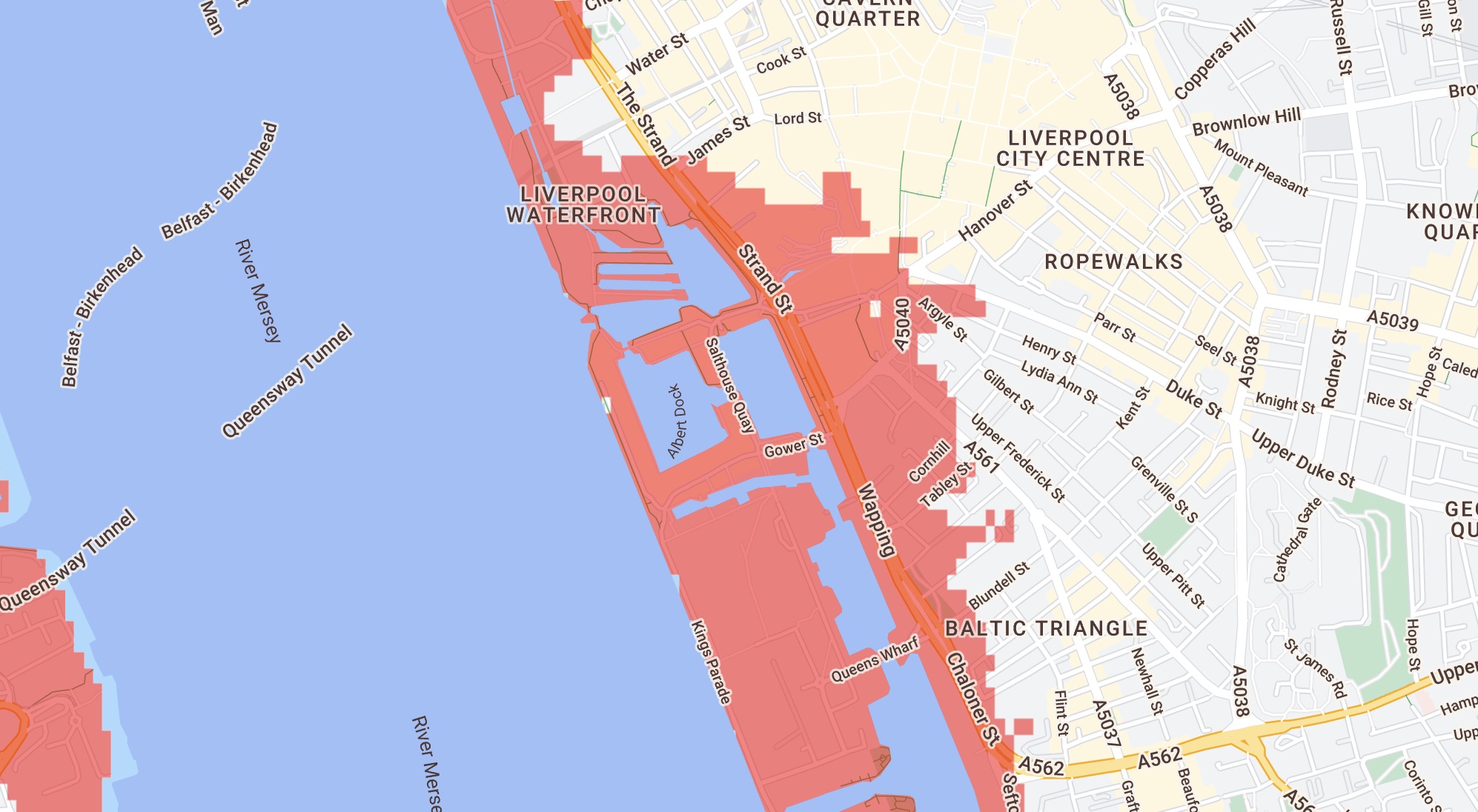Engage took part in a Europe-wide project with a number of cities exploring the impact on heritage buildings of climate change and sever weather conditions (the European Climate and Heritage Research Project ARCH). It is a year since the conclusion of the ARCH project we participated in so Engage wants to report to you what has gone on since.
Almost coinciding with the final events of the ARCH project, a new piece of public art was unveiled in July 2022 at the Waterfront thanks to a collaboration by Liverpool Biennial and Liverpool BID Company.
“Merseyside Totemy” by Alicja Biala is a trio of eye-catching sculptures that creates a lot of interest around the Liver Building giving it a distinct maritime feel. It is only when approaching the sculptures and taking in the information on the plaques though, that a deeper meaning is revealed: Each totem visualises the percentage of the area it represents that will be under water by 2080, if sea levels continue to rise.

The three geographical areas represented by the sculptures are Liverpool City Centre, Formby and Birkenhead and seeing how much of our beloved Formby would be affected does not fill any city centre resident with relief that “only” 4% of Liverpool will seem to be affected. On second thoughts perhaps within this 4% we might have to include your favourite spot along the river front or a favourite basement club but it will most certainly include the Three Graces and the very spot where these sculptures are displayed.

Looking at this map projecting sea level rises paints a bleak picture of turning some of the finest buildings in Liverpool into properties with direct access to the water. In terms of preparedness, we should thus all be on our starting blocks ready to secure a future in the region for our children and grandchildren.
So, in the year since the installation we might have expected the Council and their team of experts to have lined up policies and strategies to inform citizens and businesses to help everyone prepare their homes and assets for a future that will need some bracing.
Looking beyond slogans and taglines on websites and banners what real action has been taken in recent years to prepare the city for the coming devastation? In 2011 Mayor Joe Anderson, the Lord Mayor and one Environment Officer signed up to the Global Covenant of Mayors, promising:
- “to go beyond the objectives set by the EU for 2020, reducing the CO2 emissions in our respective territories by at least 20%.
- to submit a Sustainable Energy Action Plan including a baseline emission inventory which outlines how the objectives will be reached, within one year of the abovementioned date.
- to submit an implementation report at least every second year following the submission of the Action Plan for evaluation, monitoring, and verification purposes.
- to organise Energy Days, in co-operation with the European Commission and with other stakeholders, allowing citizens to benefit directly from the opportunities and advantages offered by a more intelligent use of energy, and to regularly inform the local media on developments concerning the action plan.
- to attend and contribute to the annual EU Conference of Mayors for a Sustainable Energy Europe.”
Two years later, in 2013, a Sustainable Energy Action Plan was published, but in the following ten years nothing more has happened: no assessments, no goals, no targets, and no progress reports.
Compare this with the page for Greater Manchester or even the City of Manchester, who seem to have used the opportunity to benchmark their work in this area rather than just signing a document and then filing it as complete. Manchester has its own Climate Change Agency with a framework for a five-year plan from 2020-2025, updated in 2022.
They have filed an update report every year since 2013 and their urgent call to action shows they are serious about becoming a zero-carbon city by 2038. In contrast Liverpool declared a climate change emergency in 2019 and pledged to become a net zero city by 2030, but by the looks of it, it is aiming to do so without publishing any data or requiring any input by residents and businesses.
While the Liverpool Combined Authority seems to be more interested in publishing data than Liverpool City Council and their online publications look more up to date and relevant, we should not be too proud to take some inspiration from our neighbours. On their website Manchester’s Climate Change Agency speaks of “achievements, vision and commitment in the fight against climate change”. Surely councils in and around Liverpool should be working in a similar way.
Even though the sculptures by the Liver Building (you must go and visit them) are meant to be only temporary, I dream of a future in which I could take my grandchildren to see these sculptures on our beautiful waterfront without the need for wellies and talk to them about a time in the past in which the city did everything it could to ensure they could make a home in Liverpool City Centre.
Engage has since started conversations with the University of Liverpool and Liverpool John Moores University to connect the academic community with the ARCH project.
Engage recently gave a talk to introduce the project to the University of Liverpool’s School of Architecture, after which we were urged to keep working on this important project. One of the comments included reaching out beyond the boundaries of the city to national organisations. Another request asked if we were prepared to host a Seminar Series on the subject. While the time frame to prepare an event of this scale this year has closed our Board is discussing this possibility for the future.
We would urge the Council to also allow space and time for this important subject not just by enabling important artworks to increase awareness, but through direct action and leadership to fulfil our pledges by the deadlines set.
Article written by Diana Heredia – Engage Board Member
Recent article in The Post: After two deaths and biblical-level rainfall, we ask: What can Liverpool do to protect us from flooding? 05.09.23

